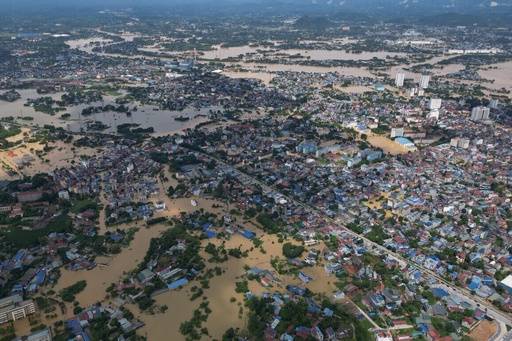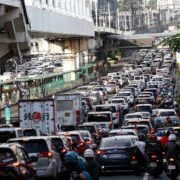Vietnam pledges $6B to build early warning systems for floods

HANOI—Vietnam is rethinking how it copes with floods after a year of relentless storms collapsed hillsides and left vast parts of cities under water.
From mapping high-risk areas to reimagining “sponge cities” that can absorb and release water naturally, Vietnam is investing billions to adapt to what experts call a new era of climate extremes. Under a national master plan running through 2030, the government has pledged more than $6 billion to build early warning systems and move communities out of danger.
In smaller cities like Vinh in central Vietnam, these ideas are taking shape. Drainage networks are expanding, flood basins are being carved and riverbanks turned into green spaces that can absorb and then drain off after heavy rains.
Climate disruption
An onslaught of storms this year has underscored the urgency of that work: “Ragasa,” “Bualoi,” “Matmo”—each carved its own path of ruin. Record rainfall turned streets into rivers and sent slopes sliding, with barely any time for the land to recover between storms.
As Typhoon “Kalmaegi” was gathering strength on its path toward Vietnam this week, scientists warned it may not be the last. It’s a glimpse of the country’s climate future—warmer seas fueling storms that form faster, linger longer, and dump heavier rain, hitting the poorest communities hardest.
“Vietnam and its neighbors are on the front lines of climate disruption,” said Benjamin Horton, a professor of earth science at City University of Hong Kong.
Severe economic toll
Scientists say the succession of storms battering Vietnam is not a fluke but part of a broader shift in how storms behave on a warming planet. Vietnam usually faces about a dozen storms a year, but the 2025 cluster was a “clear signal” of global warming, said Horton.
Ocean waters are now nearly 1 degree Celsius (33.8 degrees Fahrenheit) warmer than before the industrial era.
The economic toll has been severe for Vietnam, a developing country that wants to become rich by 2045. Floods routinely disrupt farming, fisheries, and factories—the backbone of its economy. State media estimate extreme weather has cost the country $1.4 billion in 2025.

















